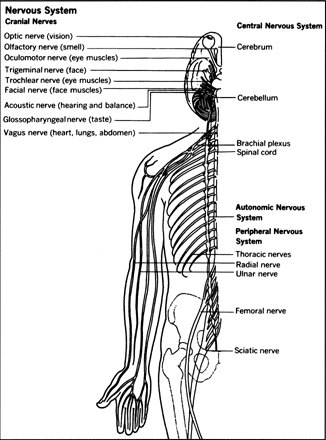Muscle Diseases - Cerebral palsy
The term cerebral palsy is not a diagnosis but a label for a problem in locomotion exhibited by some children. Definitions of cerebral palsy are many and varied, but in general refer to nonprogressive abnormalities of the brain that have occurred early in life from many causes. The label implies that there is no active disease process but rather a static or nonprogressive lesion that may affect the growth and development of the child.

Symptoms
Included in the category of cerebral palsy are such problems as limpness (flaccidity), spasticity of one or all limbs, incoordination, or some other disorder of movement. In some patients, quick jerks affect different parts of the body at different times ( chorea ); in others, slow, writhing, incoordinated movements ( athetosis ) are most pronounced in the hands and arms. Incoordination of movement may also occur in muscles used for speaking and eating, so that speech becomes slurred, interrupted, or jerky; the patient may drool because incoordinated muscle action prevents efficient swallowing of saliva. This does little to improve the physical appearance of the child and, unfortunately, he may look mentally subnormal.
The fact that a patient has an abnormality that is responsible for difficulty in locomotion or speech does not mean that the child is mentally retarded. There is some likelihood that he will be mentally slow, but patients in this group of disease states range from slow to superior in intelligence, a fact that emphasizes that each child must be assessed individually.
A complete examination must be completed, and to determine the patient's functional status complete psychological testing should be performed by a skilled psychologist.
Treatment
Treatment for cerebral palsy is a continuing process involving a careful surveillance of the patient's physical and psychological status. A physical therapist, under the physician's guidance, will help to mobilize and maintain the function of the neuromuscular system. Occasionally, an orthopedic surgeon may surgically lengthen a tendon or in some way make a limb more functional. A speech therapist can provide additional speech training, and a vocational therapist can help the patient to find appropriate work. The key professional is the primary physician, usually the pediatrician, who with care and understanding guides the patient through the years.

Comment about this article, ask questions, or add new information about this topic: